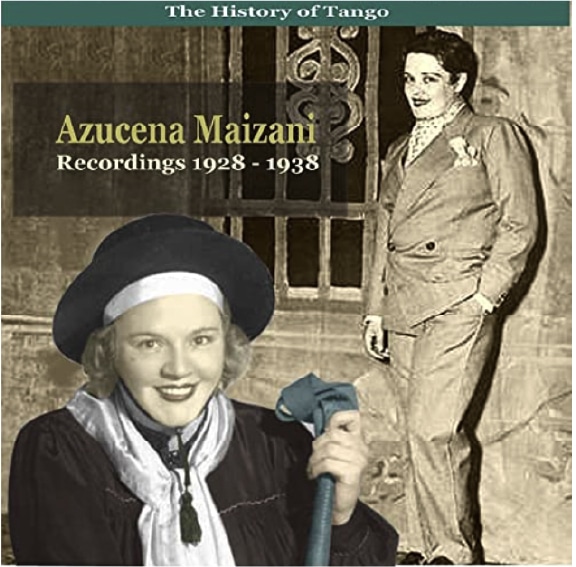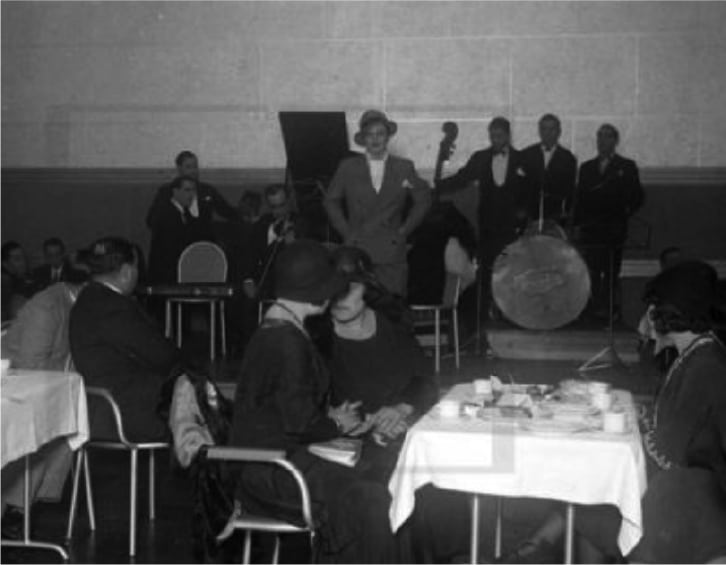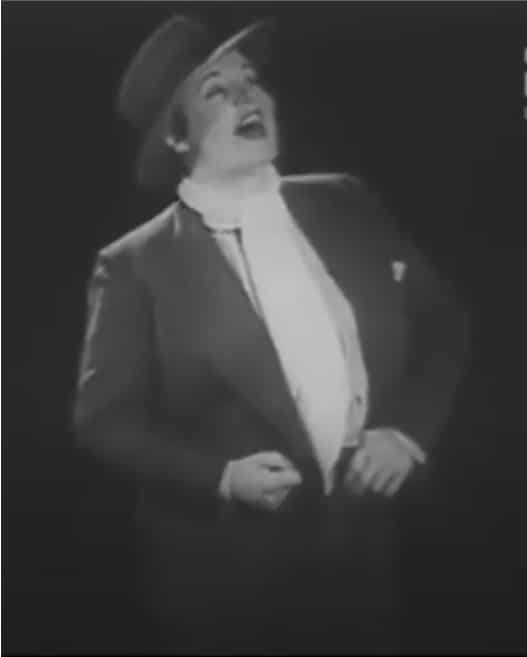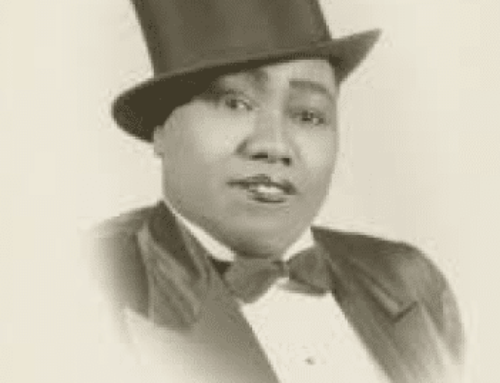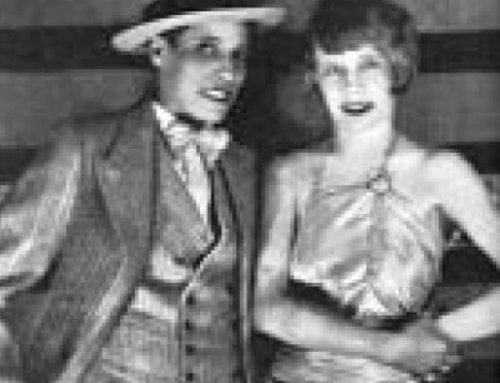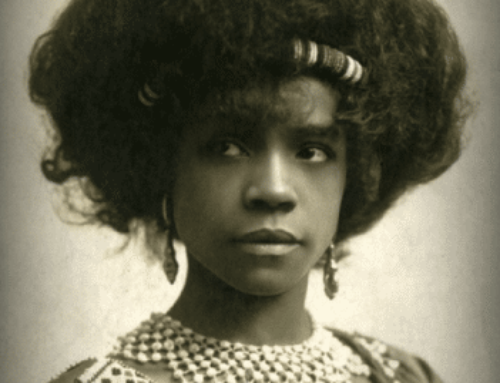
Years active
c.1920 – 1945
Stage Name(s)
Azucena Maizani, Azabache, La Ñata Gaucha
Category
Male Impersonator
Country of Origin
Argentina
Birth – Death
1902 – 1970
Bio
Azucena Maizani was one of the leading female singers of the tango, with a career that soared to prominence during the early 1920s and continued through the tango’s Golden Age (1935-1952). She performed widely in her native Argentina, as well as internationally in South America, Europe, and North America. She also recorded commercially successful records, appeared in Argentinean tango films, wrote original songs, and performed with some of the most renowned tango orquestas of her time.
Maizani broke ground in general as a female performer in the extremely male-dominated field of early twentieth century tango. She also broke particular ground as a male impersonator on the cabaret stages of Buenos Aires. In that era, when women first attempted to perform the tango-canción (tango songs with lyrics), they were rebuffed by male gatekeepers who insisted that there was no place for female singers of tango, since the lyrics were written from the perspective of men—and not just men, but the macho “compadritos” who embodied the danger and virility of a working-class, gritty underground culture. A small yet powerful group of groundbreaking women- including Linda Thema, and others whose names have not yet been recorded – responded by donning men’s clothing, swaggering onstage, and singing their way right into that masculine point of view.
The phenomenon of male impersonation in the early tango era went largely undocumented. Even now, in the largely Spanish-language world of tango scholarship, it is systematically sidelined, downplayed, or erased. As a result, many details remain difficult to confirm. Exactly how it originated, or with whom, is unknown. However, some scholars believe Maizani to be the first to do it, the one who paved the way. Without a doubt, she was one of the core trailblazers, and the most famous male impersonator of the tango cabaret scene.
Maizani was born to an impoverished family in the Palermo neighborhood of Buenos Aires, where she lived until the age of five. At that time, due to health problems, she moved to an island in the Río de la Plata, the wide river that runs between Argentina and Uruguay. She grew up there, on Isla Martín García, until the age of seventeen, when she returned to Buenos Aires and immediately started working to help support her family. She took a job as a seamstress in a factory, one of the few fields open to working-class women at the time. Meanwhile, after her long hours of manual labor, she sought out ways to pursue her dreams, and sing.
In the early 1920s, the tango scene was exploding. This musical form had originated in low-income neighborhoods where immigrants and the Afro-Argentinean descendants of enslaved people had mixed their musical traditions to create something vibrant and new. It was a music of pain and longing, poverty and displacement, sorrow and passion and desire. At first, the upper class had treated the tango with disdain, but now it had grown fashionable and was featured in an ever-growing scene of swanky cabarets. In this atmosphere of opportunity and change, Maizani approached leading musicians of the time, such as Francisco Canaro, and asked them to audition her and give her a chance to perform. Within a few years, she had launched a long and storied career.
Maizani performed in different costumes. She sometimes wore a simple dress, in a female presentation. At other times, she took on the attire of the “compadrito,” a kind of South American “gangster” aesthetic, with a men’s suit, white scarf, and a fedora cocked suggestively over one eye. She still wore lipstick and eye makeup; passing was not the goal, and the presence of feminine elements in her masculine performances created its own kind of gender defiance. She also performed in the traditional clothing of gauchos, the “Argentinean cowboys” who worked the land and steered cattle in the countryside. This gaucho attire reflected a different relationship to masculinity, rooted in a rugged life, a peasant’s endurance, and the cultural specificity of rural South America.
Maizani’s love life was tumultuous. She married in 1928, but divorced her husband, Juan Scarpino, after their only child died. After this, she was in a relationship with a tango violinist, Roberto Zerrillo, who was also her creative collaborator. They toured and performed extensively together. Some scholars speculate that their relationship may have been a cover for both of them to carry on same-sex affairs, though there is no conclusive evidence to confirm or deny this theory. (The most famous of all tango singers, Carlos Gardel, is also widely speculated to have been a closeted gay man; he was a friend of Maizani’s.) Her next known relationship was with a man who quickly took over representing her as an artist, then conned her and stole her money. When the betrayal was discovered, he committed suicide, in 1936. After this, there is no record of Maizani’s intimate life.
Only one known video recording exists of Maizani performing in male attire, thanks to her appearance in the 1933 film ¡Tango!, which made history as Argentina’s first movie to feature full optical sound. In the opening credits, she performs a song she herself composed, “La Canción de Buenos Aires,” wearing a dress. At the end, she returns in a man’s suit and fedora, and performs the song “Milonga del 900,” a rich, unabashed expression of love for a woman who’s now gone. (The clip is available on YouTube.)
The narrator of the song, presumably a man, opens by declaring what he likes: jagged things, wearing army boots, and walking on the street instead of sidewalks. This assertion of masculinity is followed by the confession that he cannot forget the woman who’s left him, that he loves her because he loves her, and that even the blade of his facón (a gaucho knife, the ultimate macho symbol and perhaps phallic symbol of the tango world) keeps crooning her name.
In this footage, under the direction of male filmmakers, Maizani’s performance is elegant, yet restrained. But there is one moment, where she slowly opens her suit jacket and hangs her thumbs cockily at the waist of her trousers, that offers a glimpse of what her live performances might have explored, exploded, or otherwise made art.
Azucena Maizani passed away in Buenos Aires, Argentina, on January 15, 1970.
Her trailblazing performances as a male impersonator inspired the character Rosa Vidal in Carolina De Robertis’s novels The Gods of Tango and Cantoras.
(Submitted by Carolina De Robertis, Oakland, CA)


